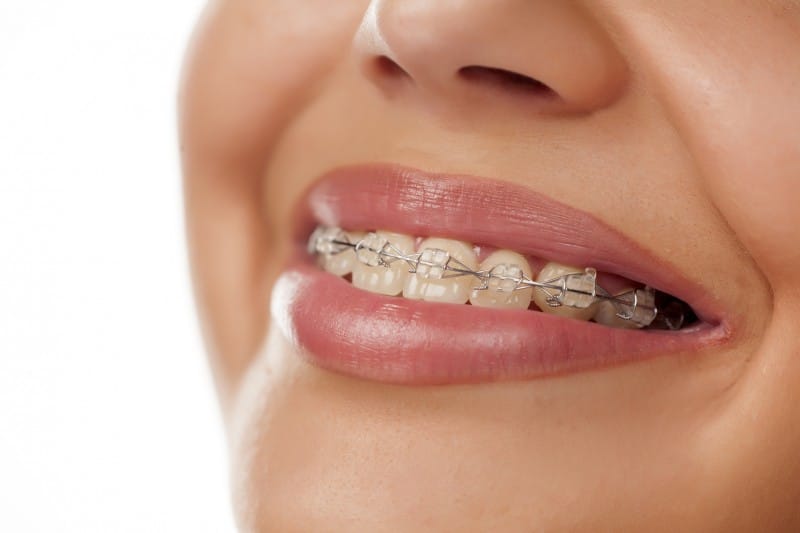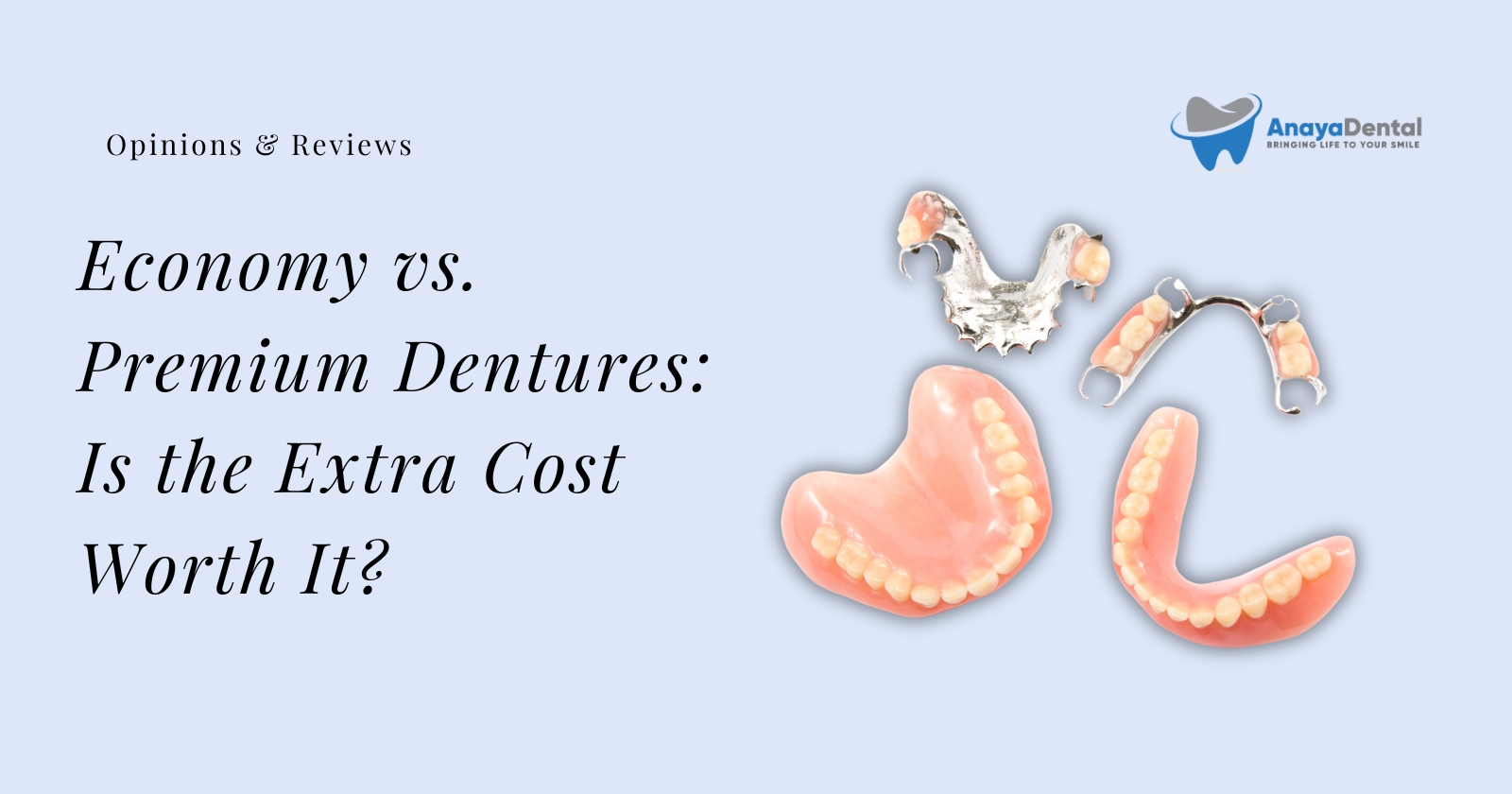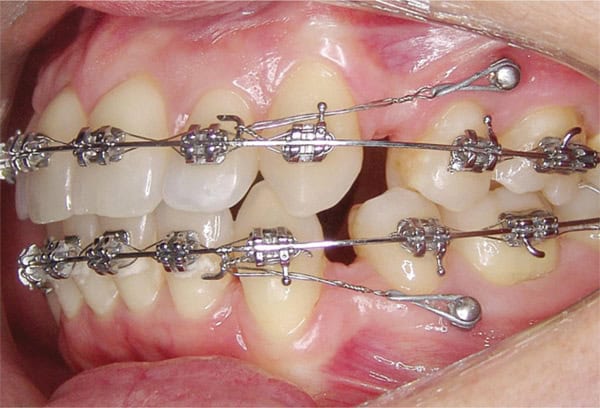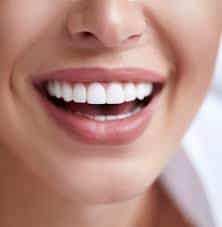Have you ever noticed a tooth that seems slightly turned compared to its neighbors? That’s a rotated tooth! Dental anomalies known as “tooth rotations” are deviations from the ideal axial angulation during the eruption. In simpler terms, some teeth emerge slightly twisted rather than growing perfectly straight. This phenomenon can affect any tooth, though it’s most visually apparent in the front of the mouth.

Etiology, the cause of tooth rotations, can be multifactorial. Genetic predisposition, insufficient space due to retained baby teeth, or persistent oral habits like thumb-sucking are all potential contributing factors. Beyond aesthetics, rotated teeth can occasionally impact functions like chewing and speech. Thankfully, modern orthodontics offers effective solutions like braces to correct these rotations, promoting a more cosmetically pleasing smile and potentially improved oral function.
Types of Rotation of teeth
Focus on Degree of Rotation
Mild Rotations: Often go unnoticed by the untrained eye, impacting only a small portion of the tooth’s crown. These might not require extensive treatment and could be addressed with passive techniques within orthodontic treatment plans.
Try Our Dental Calculators
Moderate Rotations: More visually apparent, affecting a larger portion of the crown. These typically require active intervention with specific adjustments in braces or aligners.
Severe Rotations: Significantly twisted teeth can cause functional problems besides aesthetics. Treatment might involve additional techniques alongside braces, like temporary anchorage devices, to achieve proper alignment.
Based on Rotational Patterns
Move beyond isolated rotations and explore how multiple rotations can combine:
Buccal-Lingual Tilts: Imagine a mesially rotated tooth that also leans facially (buccally) or lingually. This combined pattern can influence treatment strategies.
Compound Rotations: A tooth might exhibit both mesial/distal rotation and a facial/lingual tilt, requiring a multi-dimensional approach for correction.
What is the Clinical Significance of Rotation Types?
The impact of rotated teeth indeed varies significantly depending on whether the issue occurs in the anterior or posterior teeth. Here is the list how these differences manifest and the specific challenges they pose:
Anterior Teeth
- Aesthetic Impact: Rotations in the front teeth are highly visible and can substantially affect a person’s smile and facial aesthetics. This visibility can lead to psychological impacts, such as reduced self-esteem and social anxiety, especially if the misalignment is pronounced.
- Speech Influence: The front teeth, especially incisors, play a crucial role in speech production. They help in articulating certain sounds—like ‘th,’ ‘s,’ and ‘z’—that require the tongue to make contact with or close proximity to the teeth. Rotations in these teeth can alter speech clarity and lead to lisping or other articulation issues.
Posterior Teeth
Rotations in teeth, particularly severe cases such as a lingual rotation of a premolar, can significantly affect the mechanics of a bite and the efficiency of chewing. Implications of these described in detail are:
1. Impact on Bite Mechanics
- Misalignment: A premolar that is severely rotated towards the tongue (lingual) disrupts the normal alignment of teeth. This misalignment can lead to an improper occlusion, which might affect the overall bite.
- Increased Stress on Jaw: The misalignment can lead to uneven distribution of forces during biting and chewing, which puts additional stress on the jaw joints (temporomandibular joints). Over time, this can contribute to disorders of the jaw, such as TMJ disorder.
- Interference with Adjacent Teeth: A rotated premolar might interfere with the normal eruption and position of adjacent teeth, potentially leading to a domino effect of misalignment.
2. Chewing Efficiency
- Ineffective Grinding: Premolars play a critical role in grinding food. A lingual rotation can impair the tooth’s ability to effectively grind food, as its surface does not align properly with opposing teeth. This results in less efficient breakdown of food.
- Food Accumulation: Rotated teeth, especially when they are misaligned inward towards the tongue, create spaces that trap food particles. This not only makes cleaning more difficult but can also lead to increased plaque build-up and subsequent dental issues like cavities and gum disease.
- Risk of Damage: The abnormal position of a rotated premolar might subject it to unusual forces, which can increase the risk of chipping or fracturing.
3. Speech and Aesthetics
- Speech Difficulties: Although less common, severe dental rotations can sometimes impact certain speech sounds, particularly those that require tongue-to-tooth contact, like certain sibilants.
- Aesthetic Concerns: Aesthetic implications are also notable, especially if the rotated tooth is visible when smiling or talking, which can affect an individual’s self-esteem and confidence.
What Causes Rotated Teeth?
Several etiological factors can contribute to dental rotations, disrupting the ideal eruption path and axial angulation of permanent teeth. Main factors causing rotated teeth are:
Limited Alveolar Space: Inadequate space within the alveolar process, the bony housing for teeth, can lead to tooth impaction and crowding. This can force permanent teeth to erupt in a rotated fashion to compete for limited space. Retained primary teeth or supernumerary teeth (extra teeth) can exacerbate this issue.
Genetic Predisposition: Hereditary factors play a role in jaw size and tooth dimensions. If there’s a mismatch between jaw size and tooth size, rotations can occur during eruption as teeth attempt to accommodate within the available space.
Oral Habits: Persistent oral habits like thumb-sucking or tongue thrusting can exert prolonged, abnormal forces on developing dentition. These forces can gradually nudge teeth out of their ideal positions, leading to rotations.
Trauma: Facial trauma during jaw development can disrupt the orderly eruption pattern of permanent teeth. This trauma can cause displacement of the tooth bud (developing tooth) or damage to the surrounding bone, leading to rotations during eruption
Ways to Treat Rotated Teeth
Rotated teeth, a misalignment during eruption, pose a challenge. There are various treatment options to correct it:
Traditional Braces: The workhorses, use brackets and wires to exert controlled pressure, with special attachments targeting rotations.
Clear Aligners: For milder cases, these employ a series of custom-made, removable aligners that gradually nudge teeth into position. Advancements in aligner technology and attachments are expanding their capabilities.
Auxiliary Features: Some aligner systems incorporate features like micro-implants or optimized aligner designs to enhance rotation control.
Essix Retainers: Following treatment, these retainers can be subtly modified for minor post-treatment rotation adjustments.
Porcelain Veneers (Mild Cases): For very slight rotations, especially in front teeth, these thin shells bonded to the tooth’s surface can mask the rotation cosmetically.
The best method depends on factors like rotation severity, treatment goals, and patient age/compliance. Sometimes, orthodontists collaborate with oral surgeons for tooth extraction to create space for proper alignment before orthodontic correction.
Braces For Rotated Teeth
Frustrated by a stubborn tooth that just won’t straighten up? Braces for rotated teeth can be your secret weapon for a picture-perfect smile. Whether your canine is slightly a skew or a front tooth throws off your symmetry, braces can gently nudge those teeth back into their ideal positions.
Traditional braces with brackets and wires are highly effective for all types of rotations, including complex cases. Clear braces, like Invisalign, are another option for mild to moderate rotations. They utilize a series of clear, removable aligners that gradually shift your teeth.
Braces are a powerful tool for combating “rotated teeth,” those stubborn grin-wreckers. Tiny brackets bonded to each tooth connect to a guiding wire that, with adjustments, applies gentle pressure. While braces might require more commitment than some options, their effectiveness for even complex rotations is unmatched, paving the way for a beautifully aligned smile.

Precise Pressure, Powerful Results: Braces work by attaching miniature brackets to each tooth. These brackets are then connected by a guiding wire. Over time, gentle adjustments to this wire apply controlled pressure, meticulously nudging the rotated tooth back into its ideal position.
Targeting Rotations: For particularly stubborn twists, braces have a secret weapon: special attachments. These tiny reinforcements can be added to the brackets, acting as leverage points to precisely target the misaligned tooth and guide its rotation.
Elastics: Silent Partners in Victory: Don’t underestimate the silent heroes of the battlefield! Elastics, worn strategically between certain teeth, can provide additional focused pressure to assist in the rotation process.
Why Braces Excel for Rotations
While other options exist, braces offer unparalleled control and precision. They can handle even the most complex rotations, ensuring a predictable and lasting correction.
The Benefits of Straightening Out Rotated Teeth
Derotation, the process of realigning a tooth that has deviated from its ideal axial angulation during eruption, offers a compelling array of advantages for oral health and function.
A Smile You Can Shine With Confidence: Let’s face it, straight teeth look great! Derotation helps create a more even, balanced smile that you’ll feel proud to show off.
Chewing Made Easier: When teeth are misaligned, it can be harder to break down food properly. Derotation can improve your chewing efficiency, which can lead to better digestion and nutrient absorption.
Keeping Your Gums Healthy: Rotated teeth can create little nooks and crannies that are hard to clean. Derotation makes brushing and flossing easier, reducing the risk of gum disease.
Speaking Clearly: Believe it or not, rotated teeth can sometimes affect your speech. Derotation can help you speak more clearly and confidently.
Protecting Your Teeth From Wear and Tear: Misaligned teeth can rub together unevenly, wearing down the enamel. Derotation helps distribute chewing forces more evenly, protecting your teeth from excessive wear.
A Comfortable Bite: Rotated teeth can contribute to a misaligned bite, which can lead to jaw pain or discomfort. Derotation can improve your overall bite function, making your jaw feel happier.
Easier Maintenance in the Long Run: Straight teeth are simply easier to keep clean. Derotation can help you maintain good oral health and avoid future dental problems.
Can Invisalign Fix Rotated Teeth?
Invisalign, the clear aligner system, has revolutionized orthodontic treatment for many. But can it handle rotated teeth?
Mild to Moderate Rotations: Invisalign excels at correcting mild to moderate rotations. The clear, custom-made aligners apply gentle, controlled pressure over time, gradually nudging the rotated tooth back into alignment.
Comfort and Convenience: Compared to traditional braces, Invisalign offers a more comfortable and discreet approach. The removable aligners allow for easier cleaning and eating.

Limitations of Invisalign:
Severity Matters: Invisalign might not be suitable for severe rotations. These complex cases might require the precise control offered by traditional braces.
Compliance is Key: Successful Invisalign treatment relies on consistent wear time. Patients must wear the aligners as prescribed for optimal results.
How Long Does It Take To Fix Rotated Teeth?
The duration required to correct rotated teeth depends on the severity of the rotation. For a minor twist, it can take just a few months, while a very rotated tooth could take a year or more. Treatment options like braces and Invisalign can both address rotations, but they may have slightly different timelines. An orthodontist can provide a more specific estimate based on your individual situation.
Cost Of Different Options For Rotated Teeth
| Treatment Option | Advantages | Disadvantages | Estimated Cost Range (USD) | Estimated Cost Range (INR) |
| Traditional Braces | – Effective for a wide range of rotation severity | – More visible | $3,000 – $10,000+ | ₹25,000 – ₹50,000+ |
| Clear Aligners (Invisalign, etc.) | – Less visible than braces | – May not be suitable for severe rotations | $4,000 – $7,000+ | 75,000 – ₹1,00,000+ |
| Veneers (For minor rotations) | – Quick cosmetic fix for very minor rotations | – Irreversible procedure that removes tooth enamel | $1,000 – $2,000+ | ₹5,000 – ₹15,000 per tooth |
How To Preserve Tooth Derotation Results?
Here’s the key to maintaining your aligned smile: Befriend your retainers! They might not be the most exciting sidekick, but wearing them as instructed by your dentist is crucial. Think of them like night guards for your teeth, keeping them from reverting to their old positions.
Regular dental checkups also play a vital role – they help ensure everything remains in top condition.
By following these simple steps, you can enjoy your straight smile for years to come!








